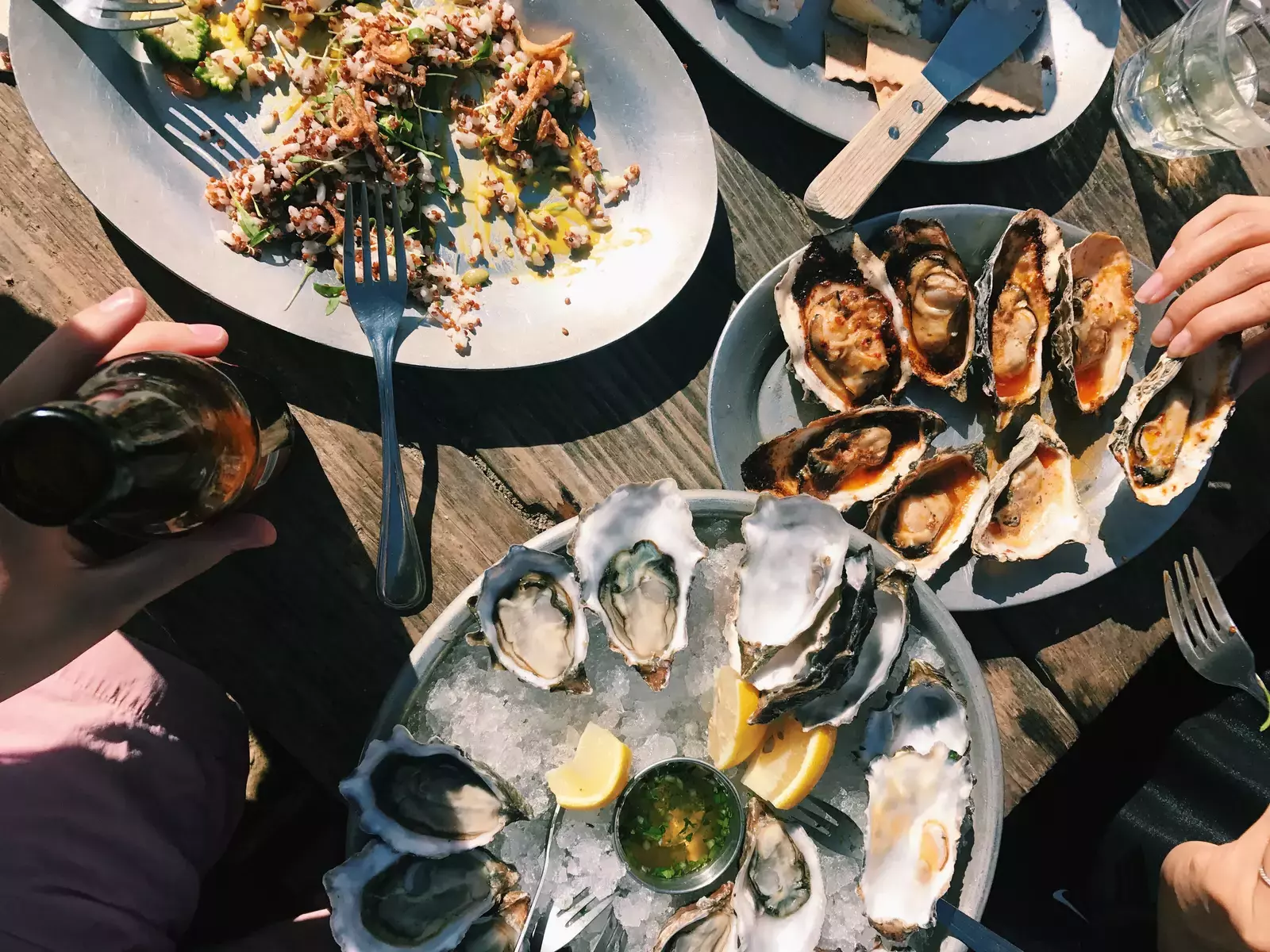.webp)
.webp)
Diving deep (for oysters) to get you everything you need to know about, well, oysters. Actually, that’s a euphemism, since oysters are most commonly found in shallow waters—not deep waters. To be specific, oysters come from estuaries, bays, and coastal areas, specifically where saltwater and freshwater mix. Now, our top tips for how to prepare oysters, what to eat with them, and all the basics of looking like you know what you’re doing when it comes to the world of oysters.
Hey Members: Party like there’s no tomorrow! Dive into your exclusive member perks now.
There are various different kinds of oysters, and these are a few that we love to eat:

What even is shucking? Shucking an oyster refers to the process of opening the shell to remove the edible part inside. It is a delicate process, so it’s advised to use a thick cloth or gloves when handling, since oysters’ shells can be sharp.
.webp)
Don’t overload your oyster! ‘Naked’ oysters will let you savor the natural taste a bit more. Here’s a few we like best:

Staying hydrated is key, as always.

For your best champagne experience… How Stemware Affects the Taste of Champagne
Variety to keep your oyster prep interesting, if you weren’t already spicing things enough by venturing into oysters!
Since oysters come from a far off land associated with mermaids and pirates, here is our attempt to bust open the myths…and hopefully find the hidden pearl.
Oysters are aphrodisiacs… or are they?

Our team of Partytrickers did a bit of sleuthing here, we’ll let you make the final call here.
Yes! Pearls can be found in some oysters that you eat, but it's quite rare. Pearls are formed when an irritant like a grain of sand or a piece of debris gets trapped inside the oyster's soft body. In response, the oyster protects itself by creating a substance to coat the irritant. Over time, layers of nacre are deposited on the irritant, and this is what forms a pearl.
However, it’s very uncommon that the oysters you get from a seafood market or restaurant would have pearls inside them. Best to go searching for those out in the wild ;)
As rumor had it… the reason for this myth is that oysters are more likely to spoil or be contaminated during the warmer months, which are typically May through August in the Northern Hemisphere (months without the letter 'R'). Historically, before modern cooling and transportation methods, eating oysters during these months could pose a higher risk of foodborne illnesses. Today, oysters can be safely enjoyed throughout the year, as long as they are sourced from reputable suppliers and handled properly.
.webp)
Not necessarily! As could be guessed, all is based on your preferences. Larger oysters may provide varying benefits, so oyster size depends on what you’re looking for. Here are a few factors of how size impacts oyster enjoyment:

Now, for you to get out there and make use of all the oyster knowledge you now have. Hey, why not keep the night entertaining and blow your guests away with the fun facts you know now. Go-to oyster game: Busting myths & shucking oysters.
Party like never before! Dive into your member perks now.
For more parties and hosting experiences of all types:

A series of hosts, creatives, cooks, lovers of gatherings, dreamers, and so much more.

A series of hosts, creatives, cooks, lovers of gatherings, dreamers, and so much more.

A series of hosts, creatives, cooks, lovers of gatherings, dreamers, and so much more.

Expert tips, exclusive content, and the 411 on the latest parties.